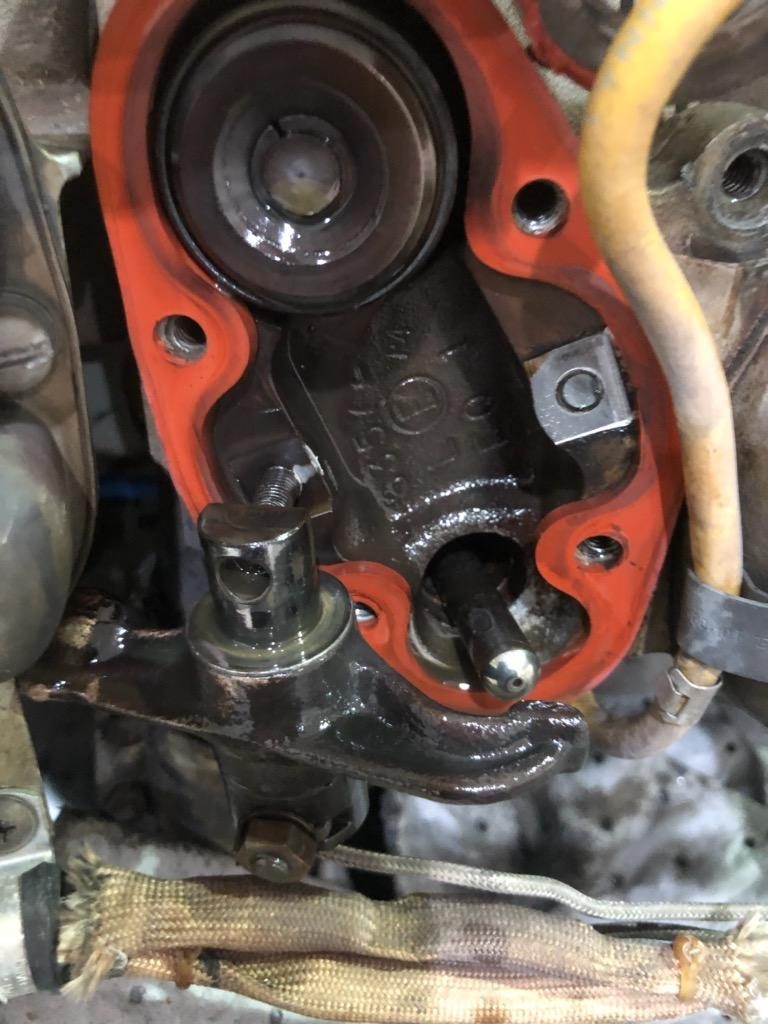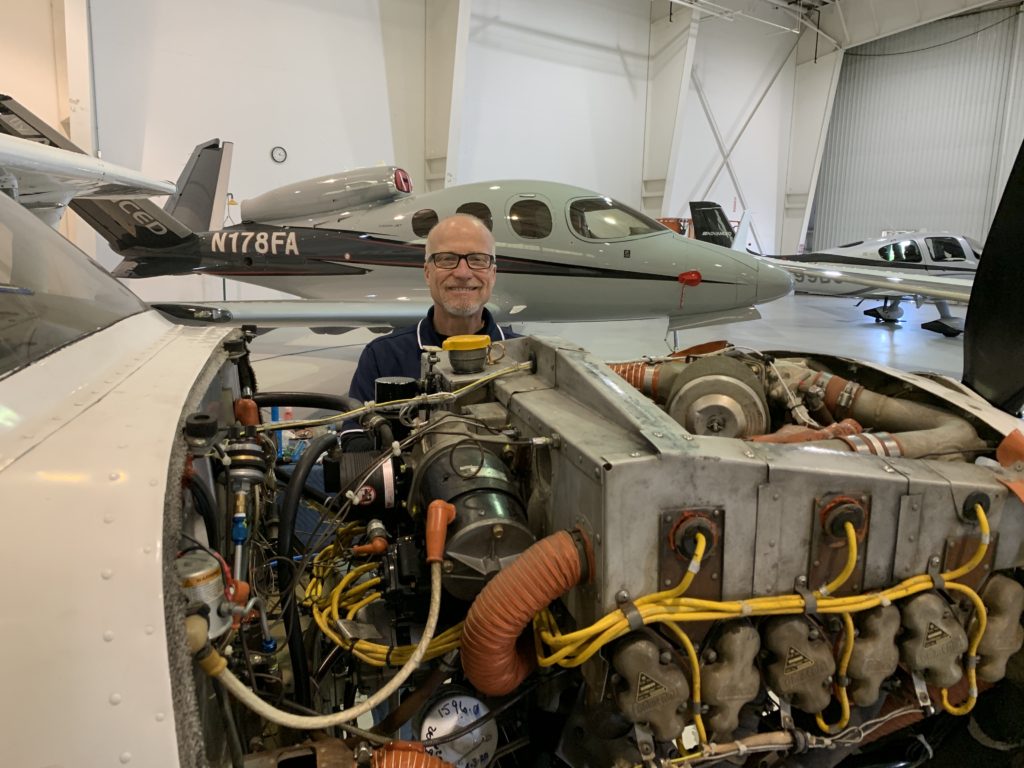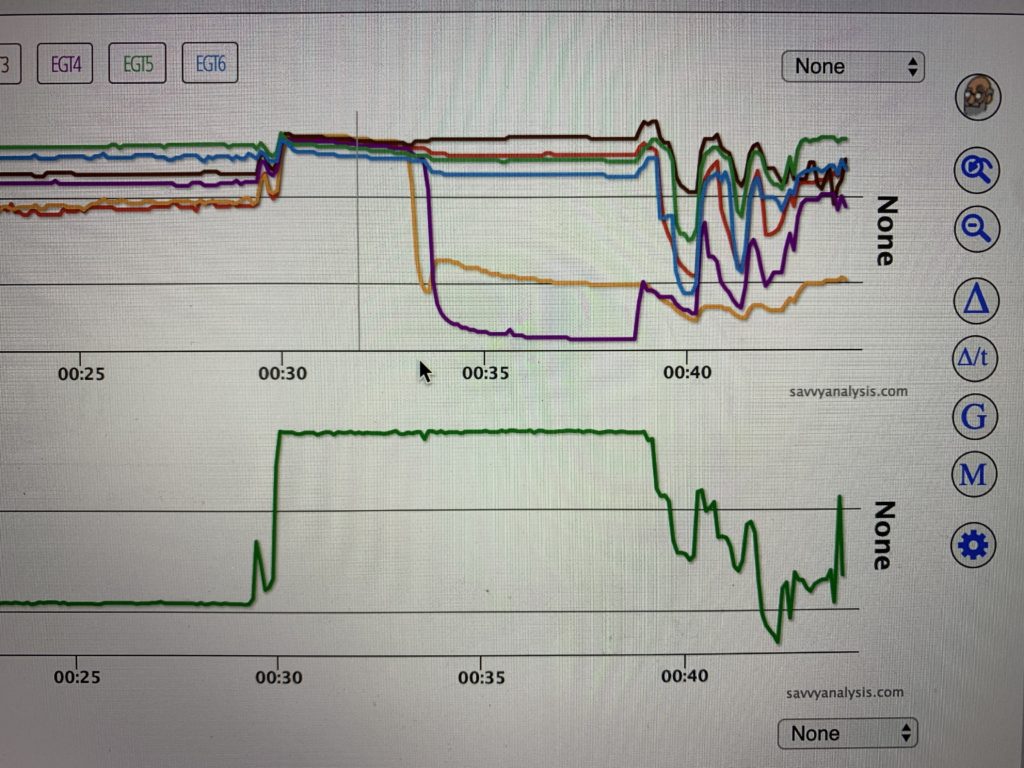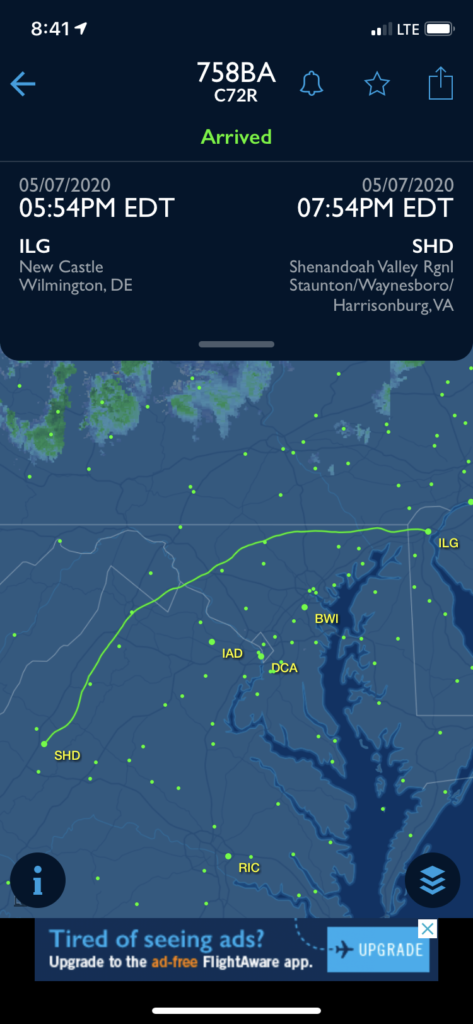Podcast: Play in new window | Download
What an adventure!
This airplane got stranded at Wilmington, Delaware due to failure of the #2 cylinder on the Lycoming IO-360 engine.
The local maintenance shop discovered the exhaust valve rocker shaft stud had broken… here’s what it looked like:

Obviously, that cylinder was rendered useless… and it caused a significant power loss. Thankfully, the flight instructor and student were able to make an uneventful landing at KILG.
Weeks later, Kenneth and I set out on an adventure to fix the airplane and get it back home.
We left early one morning with a new cylinder assembly and all the parts and tools we anticipated needing for the repair.
It went as well as could be expected… here’s Kenneth at work in the shop, where we were surrounded by amazing airplanes… a TBM, a Cirrus Vision Jet, and some other bigger jets. The only other piston airplane in this shop was a Piper Warrior.

I wasn’t sure how it would go having two of us working on the same cylinder change, but it went very well.

We took a short lunch break to grab some burgers at Wendy’s, and by mid afternoon, the installation was complete.
We did a short ground run, and then it was time for a brief local flight to make sure things were good for the return to Shenandoah Valley. I’d never done a maintenance test flight at a towered airport, so that was a little different, but actually went very well. The controller was excellent to work with and very helpful, which was much appreciated.
After the short flight, we checked the engine again and everything looked good. Now it was time for the flight home.
Kenneth flew the Mooney we had traveled in that morning, and I flew the Cessna 172XP. Most things went as planned, except for the out of the ordinary situation right before takeoff.
A single engine Cessna landed and told the controller their oil door popped off, and it was on the runway. So we had to wait for a maintenance truck to come out and retrieve the oil door off the runway before we could take off. I didn’t see that one coming!
The trip home went very well… I flew VFR, so I was thankful I had noticed the night before that I could fly slightly around the North side of the BWI, IAD, and Washington, DC area, and stay clear of those areas.
This airplane has a JPI engine monitor, and I later downloaded the data and saw exactly where the cylinder failure had occurred. Take a look:

I just wish the sample rate had been set to 1 second, instead of 6 seconds, but it’s better than nothing for sure. The upper graph is the EGT, and the yellow line is cylinder #2, the one that failed. What I haven’t fully figured out yet, is why the purple (#4) dropped off so dramatically right after that. I’m thinking that happened since it was right next to #2, but I need to ask an engine data expert about that. Maybe I’ll check with Joe Godfrey with Savvy Analysis.
(The bottom graph is engine RPM.) There’s so much more information in the profile that is not shown here.
One more thing… I was very thankful that when I got an error message on the way home, it was for cylinder #1 and not #2, the one we had just fixed. Here’s a shot of the engine monitor on the trip home:

It later turned out that one of the probe wires for #2 was loose… an easy fix.
All in all, it was a great adventure, and I’m thankful for the opportunity to help rescue a stranded airplane. It’s a wonderful thing to fly an airplane you’ve returned to airworthy condition!
Here’s a screen shot of my trip home… a little squiggly, but I figure it’s not bad for the given circumstances!



Leave a Reply
You must be logged in to post a comment.